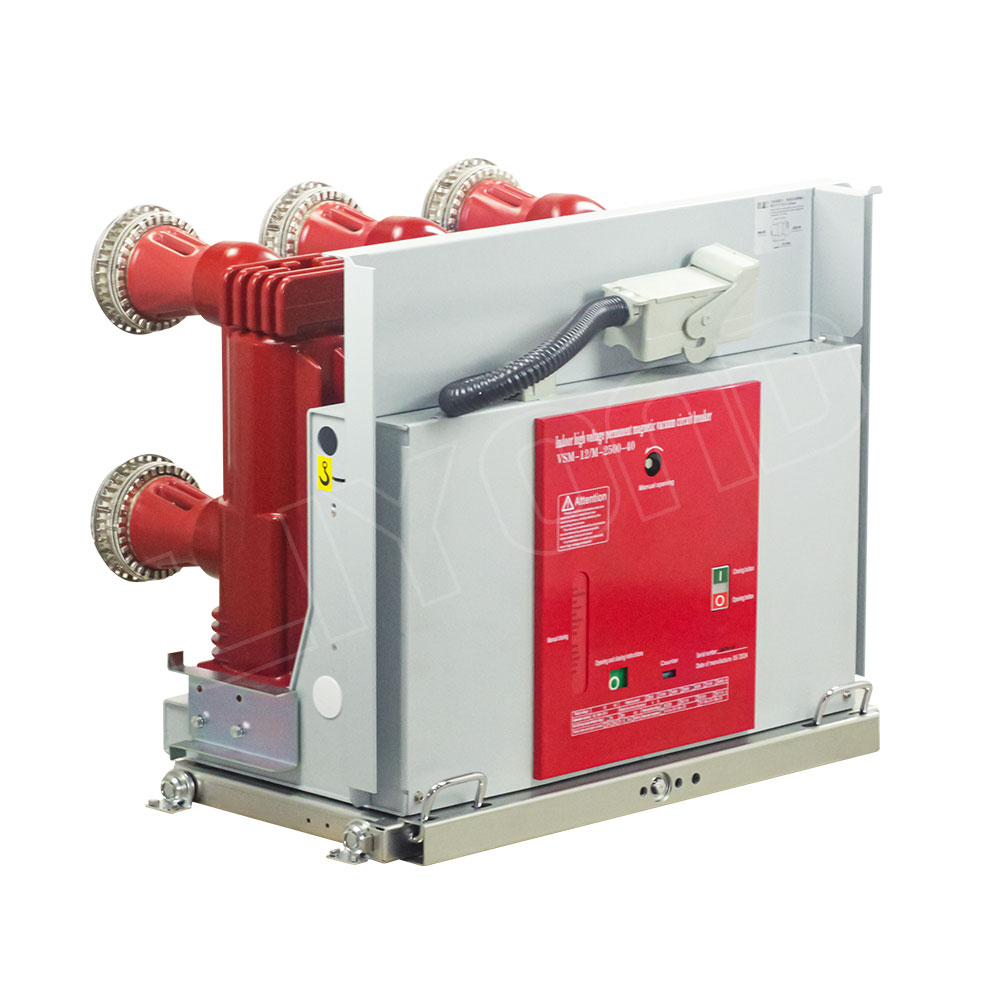Introduction to the Vacuum Circuit Breaker
A vacuum circuit breaker is one of the most advanced types of circuit breakers used in modern electrical systems. It is designed to interrupt and isolate electrical circuits when faults occur, ensuring system safety and stability. The unique feature of the Vacuum circuit breaker lies in its ability to extinguish the arc in a vacuum environment. Unlike conventional circuit breakers that use oil, air, or SF6 gas, the vacuum circuit breaker relies on a vacuum interrupter chamber to perform the switching and interruption process efficiently.
What is a Vacuum Interrupter?
At the heart of a vacuum circuit breaker lies the vacuum interrupter. It is the key component responsible for breaking the current and extinguishing the arc. A vacuum interrupter consists of two main contacts—fixed and moving contacts—enclosed in a sealed vacuum envelope made of high-strength ceramic material. When the contacts separate under fault conditions, an arc forms between them. However, since the medium is a vacuum with very low pressure, the arc extinguishes almost instantaneously. This makes the vacuum circuit breaker highly reliable and maintenance-free compared to other breaker types.
Working Principle of the Vacuum Circuit Breaker
The vacuum circuit breaker operates based on the principle of arc extinction in a vacuum. When the breaker is in the closed position, current flows through the contacts of the vacuum interrupter. During a fault or overcurrent condition, a signal triggers the mechanism to open the contacts. As the contacts separate, an electric arc is produced. However, due to the vacuum environment, the arc quickly collapses as the electrons and ions are absorbed by the contact surfaces. This rapid arc extinction is what makes the vacuum circuit breaker efficient, safe, and ideal for medium-voltage applications.
Structure of a Vacuum Interrupter
The vacuum interrupter inside the vacuum circuit breaker is a sealed cylindrical chamber that prevents any gas leakage. It is composed of several critical parts:
- Vacuum envelope – Provides the vacuum environment necessary for arc extinction.
- Contacts – Made of copper-chromium alloy to withstand high temperatures and minimize contact erosion.
- Bellows – Allows the moving contact to operate without breaking the vacuum seal.
- Shield – Prevents vaporized metal from depositing on the envelope walls.
This structure ensures the vacuum circuit breaker remains operational for thousands of switching cycles without performance degradation.
Advantages of Using a Vacuum Circuit Breaker
The vacuum circuit breaker offers numerous advantages that make it a preferred choice in electrical networks:
- High reliability – The vacuum interrupter’s sealed design prevents contamination.
- Low maintenance – No need for oil replacement or gas refilling.
- Long service life – Minimal contact wear ensures long operational durability.
- Compact design – The vacuum circuit breaker is smaller and lighter than traditional breakers.
- Environmentally friendly – Since it does not use SF6 gas, it poses no threat to the environment.
- Fast operation – The arc extinguishes in less than half a cycle, ensuring quick isolation.
These benefits make the vacuum circuit breaker suitable for industrial, commercial, and utility applications.
Applications of the Vacuum Circuit Breaker
The vacuum circuit breaker is commonly used in medium-voltage power systems ranging from 1 kV to 33 kV. Its reliability and efficiency make it ideal for:
- Power distribution networks
- Industrial plants
- Substations
- Mining operations
- Railway traction systems
- Renewable energy systems
Because the vacuum circuit breaker operates efficiently in harsh environments, it is often chosen for systems requiring minimal downtime and high operational safety.
Role of the Vacuum Interrupter in Performance
The performance of the vacuum circuit breaker depends largely on the quality of its vacuum interrupter. The interrupter’s ability to extinguish the arc rapidly determines the breaker’s speed and safety. High-grade copper-chromium contacts enhance the dielectric recovery rate and reduce erosion. This ensures that the vacuum circuit breaker maintains consistent performance over many years of service. The vacuum interrupter also allows high switching frequency and can handle multiple operations without the risk of internal gas decomposition, unlike gas-insulated breakers.
Maintenance and Inspection
One of the key advantages of the vacuum circuit breaker is its minimal maintenance requirement. Since the vacuum interrupter is sealed for life, it does not require periodic checks or gas pressure monitoring. However, routine inspections should include mechanical operations, insulation resistance testing, and contact wear measurement. If the contact wear exceeds the permissible limit, the vacuum interrupter can be replaced without changing the entire vacuum circuit breaker assembly. This feature reduces downtime and enhances system reliability.
Future of the Vacuum Circuit Breaker Technology
The vacuum circuit breaker continues to evolve with advancements in materials and manufacturing technology. Modern designs incorporate smart sensors, IoT connectivity, and diagnostic systems for real-time monitoring. Researchers are also developing high-voltage vacuum circuit breakers that can operate beyond 72.5 kV, expanding their applications in power transmission. As environmental concerns grow, the vacuum circuit breaker is emerging as a sustainable alternative to SF6-based breakers, aligning with global clean energy goals.
Conclusion
The vacuum circuit breaker is a revolutionary device in the field of electrical protection, combining reliability, safety, and sustainability. The vacuum interrupter plays a vital role in ensuring quick arc extinction and long-term performance. With its sealed design, minimal maintenance, and eco-friendly operation, the vacuum circuit breaker has become the standard for modern electrical systems. As technology progresses, the vacuum circuit breaker will continue to dominate power distribution networks, offering superior efficiency and environmental advantages for years to come.
